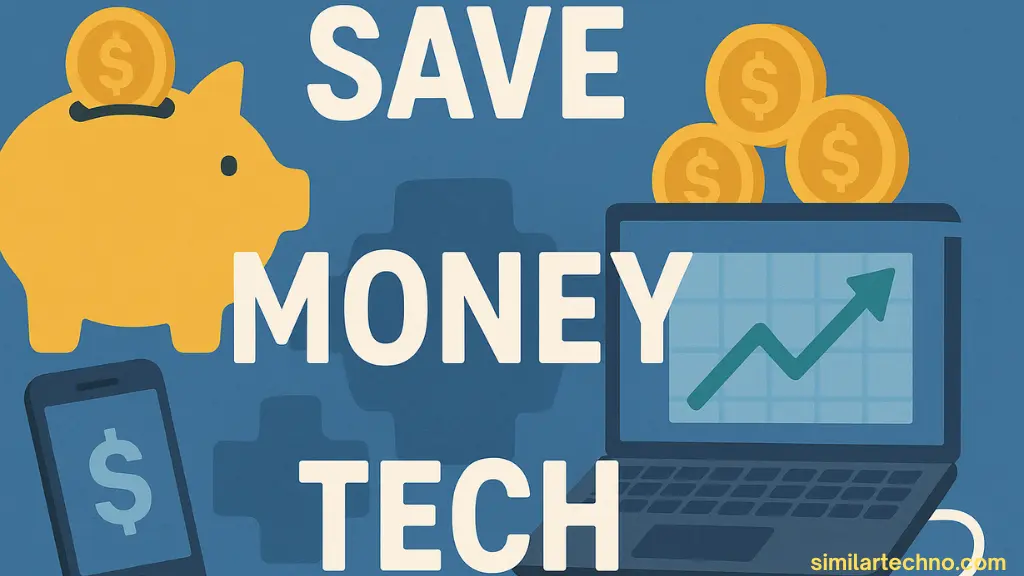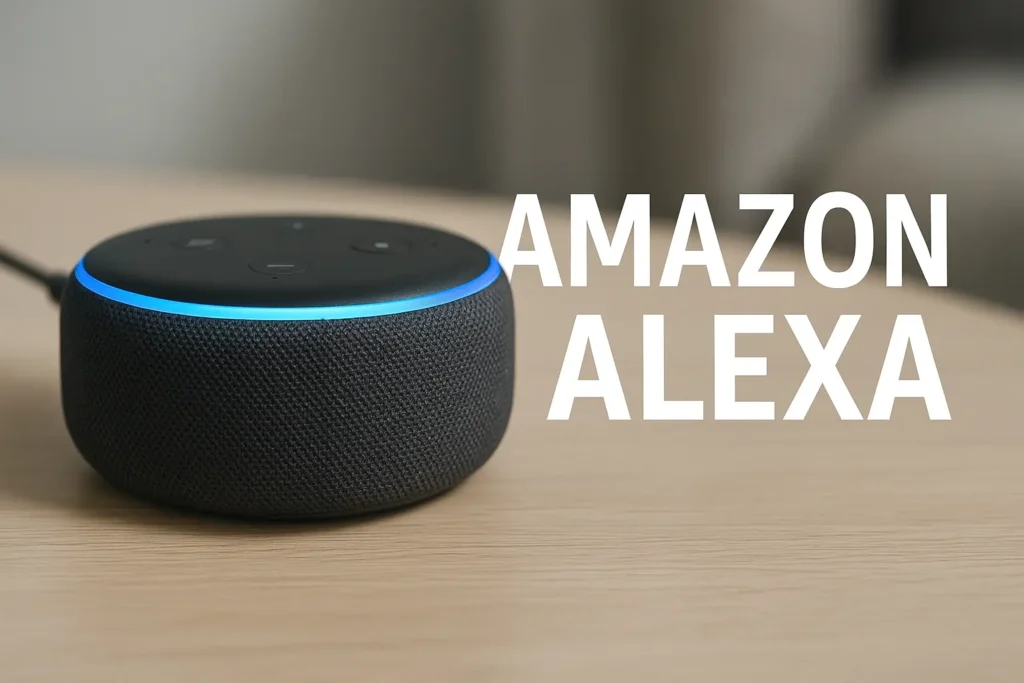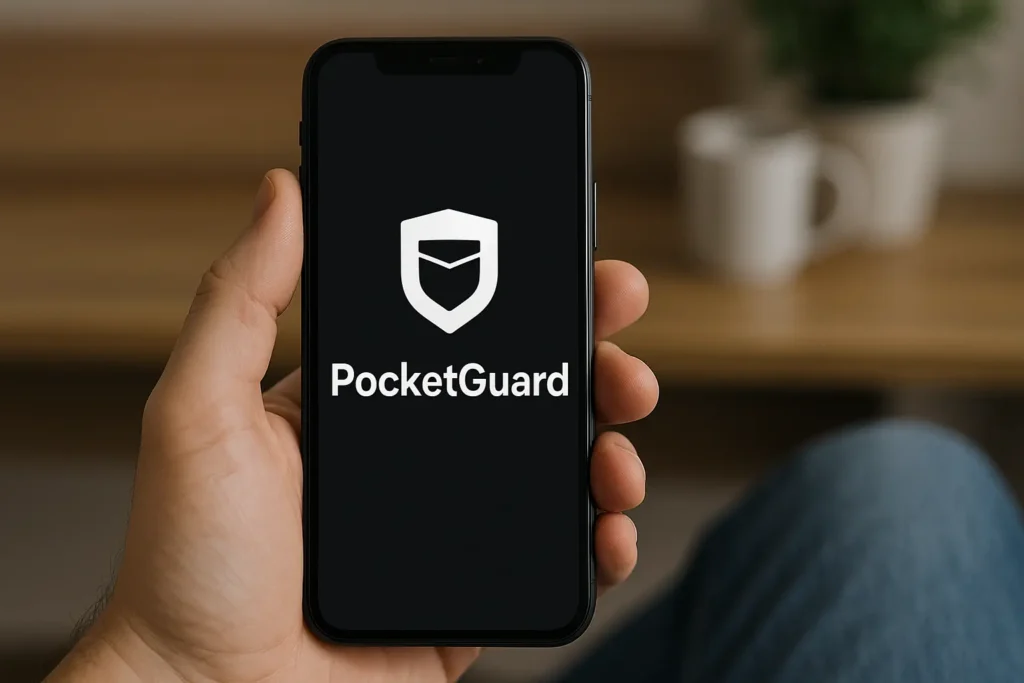When I started using technology to track my expenses, I had no idea how much I would save. The keyword in this context is “save money tech,” and it has never been more up-to-date in 2025. Wherever you live, whether in Bangladesh or India, the right technology can halve your bills, improve your budgeting, and earn cash back without lifting a finger. From personal budgeting apps to energy-saving smart home devices, I’ll share my favourite ways to stretch every rupee (or taka) using technology I use myself.

Budgeting Apps That Changed My Life And My Wallet
These apps are not just about tracking numbers; they are about transforming your habits and empowering you to take control of your finances. Starting with Rocket Money and then moving on to YNAB (You Need a Budget) and Quicken Simplifi, I found myself setting spending goals, tracking income versus expenses, and identifying leaks in my budget.
If you’re a student or just starting, tools like Goodbudget or even a simple Google Sheet template with cloud storage syncing can work wonders. One huge benefit? Reminders to inform you when you are nearing your budget limit. Your control will be enhanced by the ability to access your banking services and track bills in real-time.
I particularly appreciate that these applications make it close down visually, such as colored charts and pie charts. It helps take budgeting less seriously and more as a game. I can track where my money is going through the use of automatic bill identification and regular spending reviews every month.
Smart Home Devices That Slash My Utility Bills
Installing smart home tech was one of the best financial decisions I’ve made. Devices like smart thermostats, LED light bulbs, and smart plugs have helped me cut my electric bills by 25%.

Take my Amazon Alexa or Google Assistant-connected smart thermostat. I can program it to adjust temperatures while I’m away or asleep. Combine that with a smart sprinkler system or an in-ground moisture sensor, and you’ll also save on water.
My lights now turn off automatically when I leave a room, thanks to motion sensors. I use smart home hubs to manage everything from one app, adding a layer of convenience to my life. Bonus tip: Set up schedules or energy-saving routines directly in your device’s settings to maximise savings.
Online Shopping Hacks With Browser Extensions
Want instant savings while shopping? I rely on Honey, Rakuten, and Capital One Shopping. These browser extensions automatically apply coupon codes and find better deals across platforms like Amazon, Flipkart, and Shopzilla.
Using price tracking tools, I always wait for the best moment to buy a product. For example, I got a USB-C hub and wireless printer at almost 40% off during a flash sale detected by my extension.
Add to that newsletter sign-ups, cashback rewards, and loyalty programs, and you’re getting double or even triple-layer savings. This isn’t just about buying cheap; it’s about buying smart.
Why Streaming Devices Save Me More Than Cable Ever Did
Cutting the cable was a no-brainer for me. With a Roku, Fire TV, or Apple TV stick, I now stream all my shows via Netflix, YouTube, Sling, and Hulu. I spend way less than I did with my old cable package, and I get to watch what I want, when I want.
Another brilliant idea is sharing subscriptions with your relatives. My parents, siblings, and I also divide the cost of most services as they permit the use of multiple profiles. Other streaming media services offer student discounts and benefits to senior citizens in AARP.
Bonus tip: Schedule a monthly “subscription audit” using apps like Trim or Rocket Money. You’ll be surprised how many auto-renewals are silently draining your bank account.
Work From Home Tech That Pays For Itself
Since switching to remote work, I’ve saved a significant amount on transportation, meals, and even clothing. All I needed was a solid Ethernet cable, a reliable laptop, and productivity apps like Slack, Zoom, and Trello.
A solid wireless printer, cloud-based storage (such as Google Drive or Dropbox), and noise-cancelling headphones can go a long way in improving efficiency and reducing office expenses. I also invested in a USB-C docking station that turns my laptop into a full workstation.
These small upgrades made my setup powerful, which means no delays, no extra office rent, and maximum productivity.
Refurbished Tech: Great Gadgets, Smaller Price Tags
Purchasing used technology transformed my eventual purchasing behaviour. Apple products, Chromebooks, or top-notch MacBooks, in any case, refurbished, will cost you less and equip you with top-quality equipment.
Sites like BackMarket, Amazon Renewed, and Apple Certified Refurbished Store offer great deals with full warranty and return policies. Always check the serial number or IMEI to confirm authenticity.
Most refurbished products undergo strict quality testing. You get nearly the same performance, a fresh battery, and a new screen—but you save big. I’ve even bought accessories like watches, wireless chargers, and Bluetooth speakers for half the price.
Personal Finance Apps That Keep Me In Check
When it comes to managing my monthly expenses, Trim, PocketGuard, and Quicken Simplifi are my go-tos. These apps sync with my bank account and credit cards, providing me with a clear breakdown of all my spending and a sense of security about my financial decisions.

They’ve helped me manage budget creep by sending alerts whenever I overspend or approach a set limit. I love that they also negotiate bills and track rewards and cashback programs.
Another favorite is eFile.com, which helps streamline my tax returns. It keeps my financial life organized and saves me from hiring a tax pro.
Low-Cost Mobile & Internet Hacks I Swear By
I switched to Mint Mobile, a more affordable provider, and reduced the price of my mobile bill by 50 per cent. I even changed my family to Google Fi, so we control five phone lines on a single platform, and the signal is quite good.
For internet savings, I optimised my Wi-Fi using a mesh router and boosted my speed with an Ethernet cable. I also limited background data usage with built-in smartphone features, such as Data Saver Mode.
My favourite trick? I monitor battery life and set up app limits on both my phone and laptop. Less usage means less charging, which ultimately saves on electricity.
Step-By-Step Tech Guide To Save Big With Everyday Gadgets
Technology can help us save money if we know how to use it correctly. Here’s my step-by-step tech guide for getting the most value out of your gadgets.
Step 1: Choose The Right Device Specifications
Purchasing a mobile phone or a laptop? Do not be tempted by the hype. Consider relevant specs. I will always look for a phone with a long battery life, 5G capabilities, wireless charging, and water resistance.
Shy away from fancy gimmicks that you do not use. Alternatively, ensure that the device fits your lifestyle. Students are purchasing devices at a discounted rate, many times. Ask in the store or refer to the producer’s website.
Step 2: Use Subscription Management Apps
Install apps like Rocket Money and Trim. Let them scan your account for recurring charges. I was shocked to find I was paying for 4 overlapping video apps!
These apps cancel unwanted subscriptions and negotiate bills. You can also set budget goals and receive alerts when you exceed your spending limit. Best part? Most are free or freemium.
Step 3: Energy Optimization For Smart Homes
Maximize the benefits of smart thermostats and smart plugs. My lights and fans were timed to switch off automatically. I have also changed all bulbs to energy-efficient light bulbs (LED bulbs).
Monitoring of energy consumption can be followed with Amazon Alexa or Google Assistant apps, which can offer intelligent recommendations. Habits like the goodnight mode practices in belt-tightening should be arranged to save.
Step 4: Price Compare Before You Buy
Before you click ‘Buy Now,’ use tools like Capterra, Shopzilla, or even Google Shopping to compare prices. This works great for software, gadgets, and accessories.
I once managed to save 30 percent on a Microsoft 365 annual subscription by switching to a discount on Friday.
Step 5: Tap Into Rewards & Cash Back
Sign up for loyalty programs, cashback cards, and online marketplaces that offer points. Combine this with browser extensions and get discounts stacked.
I use Amazon Pay to earn points, redeem them on electronics, and still get free shipping. That’s double savings!
FAQ: Save Money Tech Tips You Need To Know
1. What is the best way to save money on tech purchases?
Buy refurbished, use price comparison tools, and shop during seasonal sales like Black Friday.
2. Which apps help me save money on subscriptions?
Trim, Rocket Money, and PocketGuard are excellent for spotting and canceling unused subscriptions.
3. How do smart home devices reduce electricity bills?
They automate usage, monitor consumption, and suggest optimizations that reduce power waste.
4. Are refurbished devices reliable?
Of course, when purchased from trusted sellers such as Apple, Amazon Renewed, or BackMarket, which offer warranties.
5. Can budgeting apps help me avoid overspending?
Absolutely. Apps like YNAB and Quicken Simplifi provide you with real-time data and real-time alerts.
Conclusion
It’s not just about saving money tech, but also about developing better habits with the assistance of powerful resources. Whether it’s a budgeting application, used equipment, smart home automation, or cashback offers, there’s a product to match every budget. I have personally tested these methods, and I can attest to their effectiveness. And if you liked these tips, please share this post with your friends, leave a comment, or even tag someone who needs to quit burning their tech budget!
